The Process of Gold Plating Jewelry
Written by Annabelle
January 23, 2019
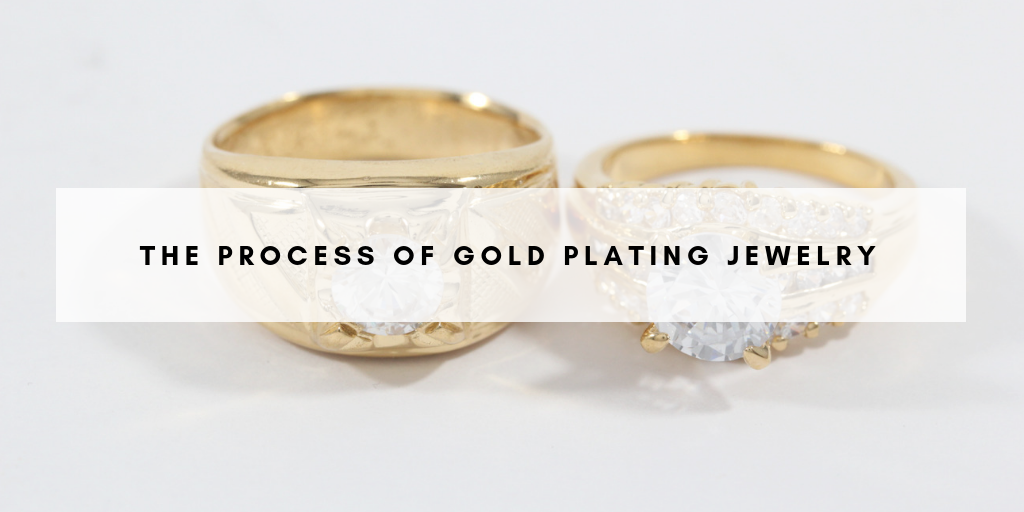
Gold- who doesn't love that bright, shimmery color? From Ancient Egypt to Mesoamerican societies, people have been historically fascinated with gold, despite the fact that it was normally reserved for the elite. In 1805, an Italian chemist by the name of Luigi Brugnatelli invented the modern technique of gold plating, and from there everyone was able to hop onto the golden aesthetic with more affordable alternatives to solid gold jewelry.
But what is gold plating exactly? Most people think it's similar to a chocolate fondue, where you just dip your item into a luxurious fountain of molten metal and it comes out like instant bling. It's actually not that simple, so we're here to give you the rundown.
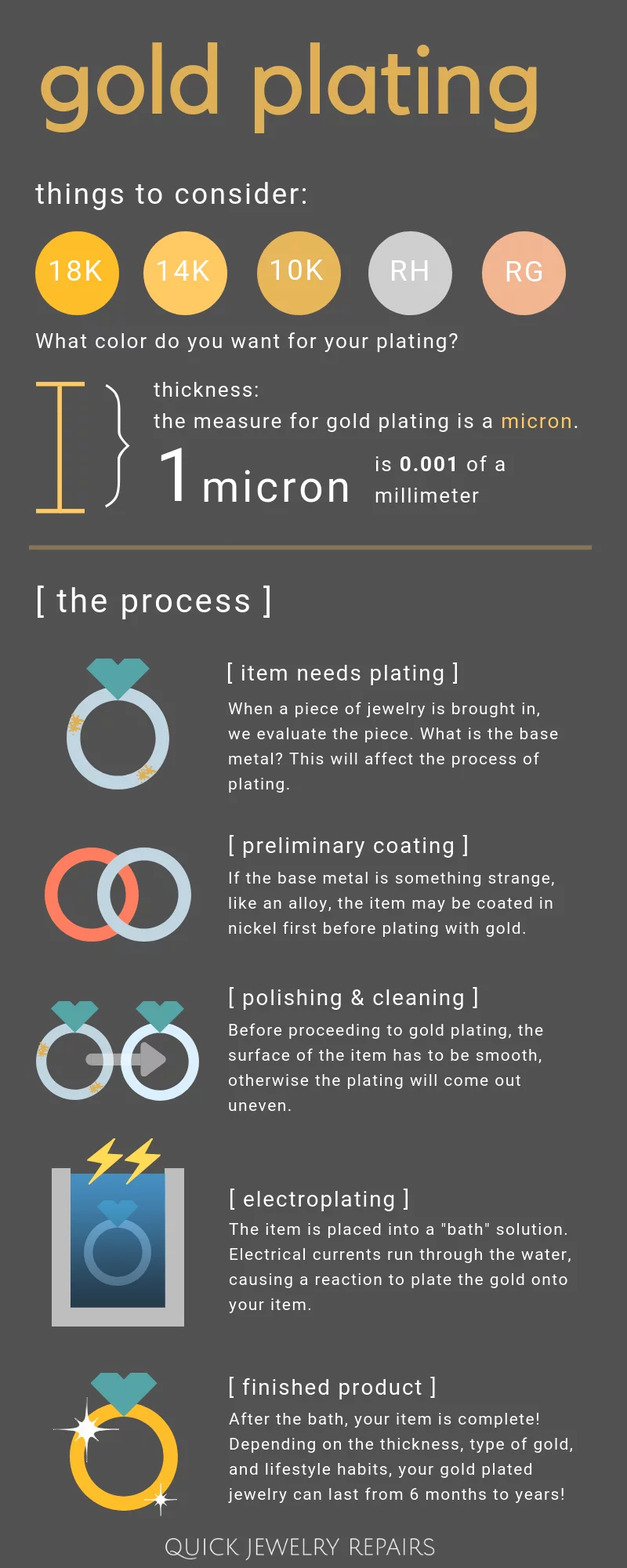
Things to Consider Before Gold Plating:
- Daily Wear & Item Type: Before you start thinking about putting gold on everything, take a moment to consider your jewelry habits. If the piece you want to plate is something you wear very often (like a ring) and you're a fairly active individual, the item will see a lot of daily wear. In cases like that, you'll want to choose a hardier material and a greater level of thickness. If the piece is a pendant or earring that doesn't come into contact with a lot of things, you can opt to just do a quick plating that will change or restore the color.
- Color: What color do you want your item to be? You can either match the original color if your item was formerly plated, or completely change it! Plating comes in 10k-24k yellow and rose gold, and rhodium plating for a white gold appearance. If you're not sure about which metal to choose, you can also send a picture and the jeweler will match the color depicted.

A silver ring that was plated in 18k yellow gold.
- Durability: The type of gold affects the longevity of the plating. Gold is naturally very soft, so if you choose high karat gold such as 22-24k (91% to 99%) pure, it will wear off faster. Selecting 10k or 14k gold will increase the hardiness of the plating, since 10k-14k gold is more durable.
- Thickness: Gold plating is measured by a unit called a micron, or 0.001 of a millimeter. Anything above 1 micron of plating is standard gold plating, with 2-3 microns being very good quality. Flash plating is a cheap alternative that is under 0.175 micron, and is only recommended for jewelry that isn't worn on the hand since it will wear off quickly.
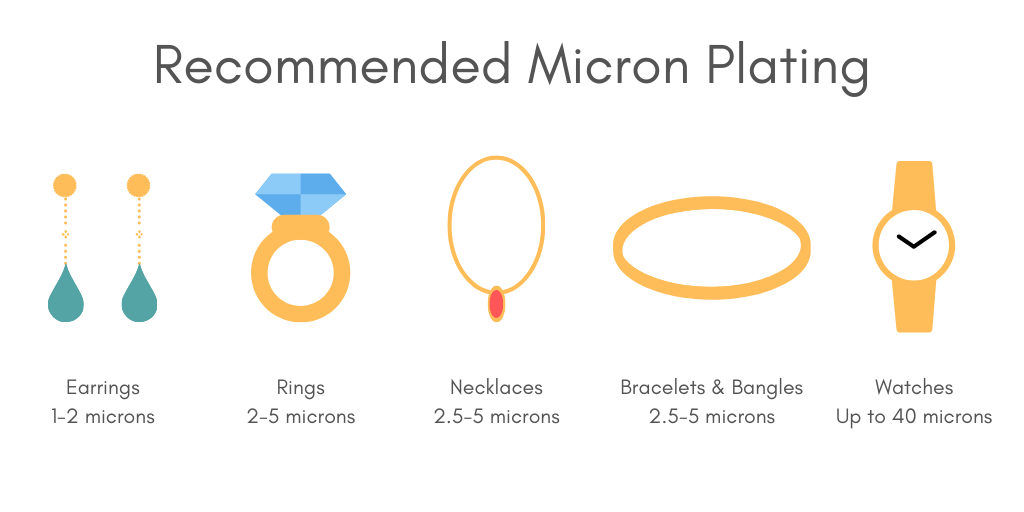
The Process of Gold Plating:
- Evaluation: When you send an item in for plating, the first thing we do is assess the piece. What kind of metal is it? Certain metals can prove to be difficult to plate due to composition or potential tarnishing.

Two rings before plating. The one on the left is a commercial alloy, while the one on the right is copper.
- Preparation: After evaluation, the piece is prepared for electroplating via extensive polishing. The polisher will buff the surface of the item until it is perfectly smooth, because a slight bump or grainy texture will cause the gold plating to look uneven and blotchy. For base metals that are difficult to plate on their own, the jewelry is polished and given a preliminary coating of either palladium or nickel before the gold is applied. After polishing, the item is electrocleaned and rinsed several times in the following baths:
- Distilled water
- Neutralizer
- Distilled water
- Micron plating dip
- Distilled water
- Electroplating: Once the item has been processed and approved, the gold plating begins! The item is submerged in a solution of water and “metal salt”, which contains the gold that will be plated onto the item. An electrical current is passed through the liquid, which dissolves the metals and chemically adheres the gold to the jewelry. The jewelry stays submerged for a certain period of time, depending on how thick the plating is supposed to be.
- Gems are usually not affected during electroplating; however, costume jewelry stones are often glued on and may be loosened in the process due to the exposure to water. Stones that are very soft and fragile (such as pearls) should not be put into any plating solution at all.

Two rings after 14k gold plating
The Cost Of Gold Plating:
The price of gold plating can be affected by the following:
- Base metal: If the base metal is something atypical, such as brass, it will require more preparation before it's sent to the gold plating tank. These metals will require a coating of nickel, which adds to the cost.
- Stones: Some stones cannot withstand the plating process, which means that they'll have to be unset and reset after the item re-emerges from the electroplating tank. Costume jewelry poses a unique challenge; the rhinestones in this kind of jewelry are often glued on, and they loosen in the plating solution. Replacing them is an additional cost to take into consideration.
- Type of Gold: The price of plating is proportional to the type of gold you want. Higher-karat gold, such as 18k or 24k, is more expensive because there's more gold!
- Thickness: The thicker the plating, the more costly the job. Keep this in mind if you want to plate something like a necklace or a pair of earrings; items that aren't on your hands don't require as much gold. Alternatively, you should anticipate paying more for plating a ring, bracelet, or watch because they require a higher micron thickness.
Now you're up to speed on gold plating! Take a moment and think about all of the ways you can bring some liquid sunshine into your jewelry box with our gold plating service today!
Featured Services:
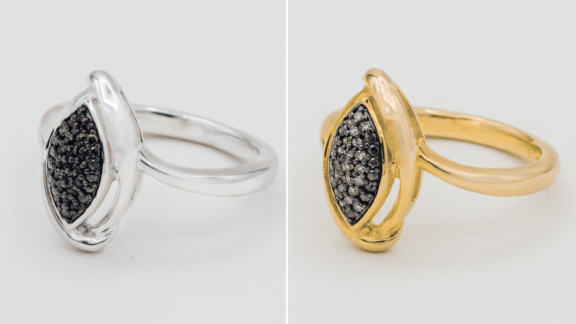
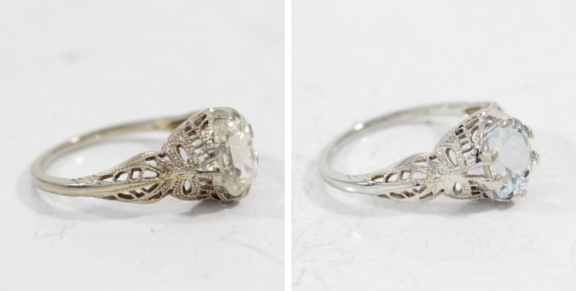
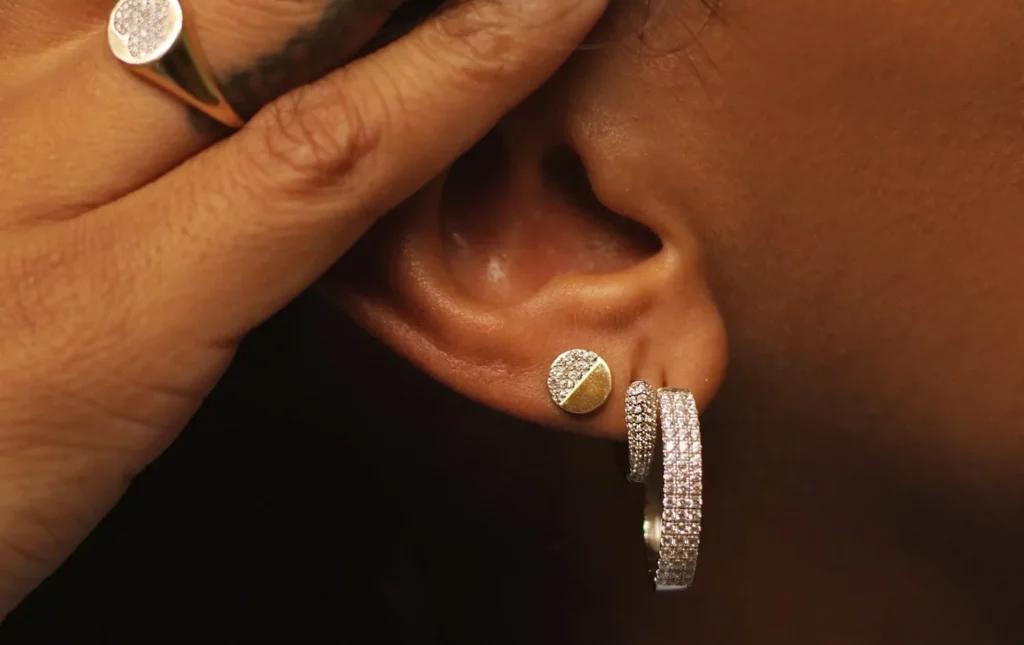
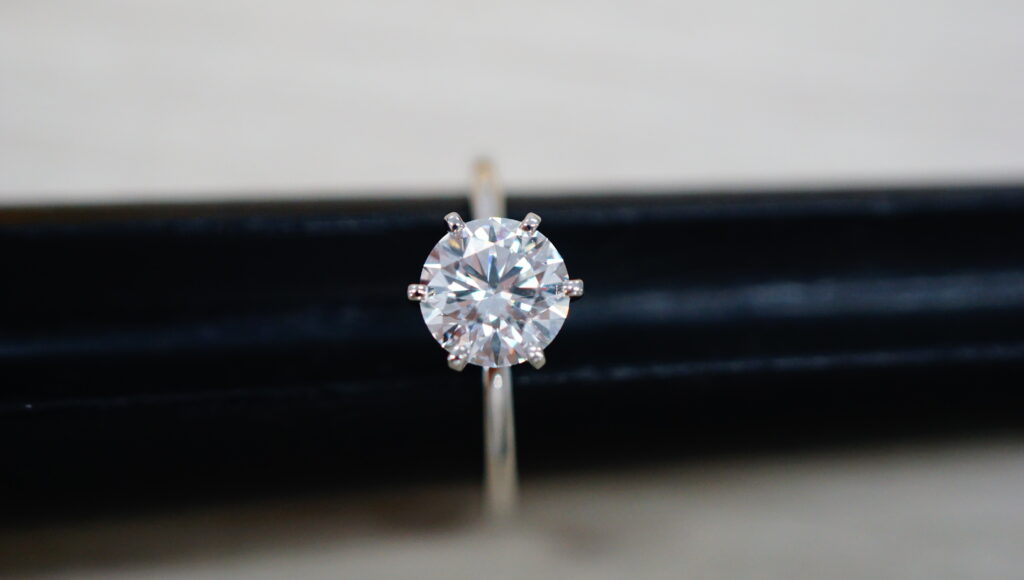

Thank you for this! It was so informative!